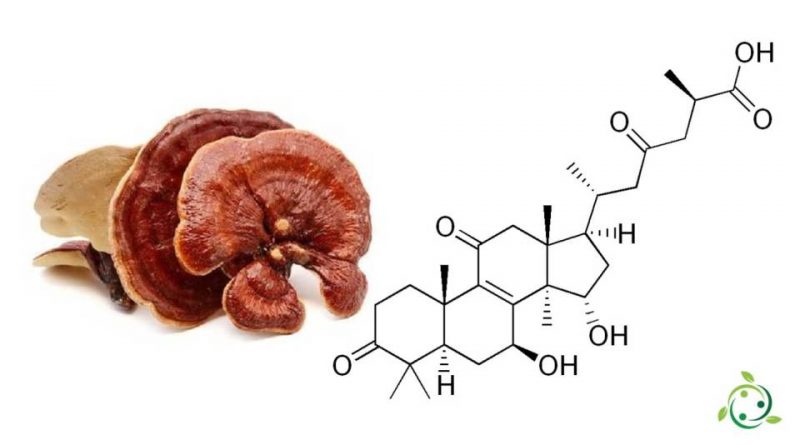Ganoderic acid
Ganoderic acid
Ganoderic acid, whose term in the official IUPAC nomenclature is: 6R- [7R, 15S-dihydroxy-4,4,10S, 13R, 14R-pentamethyl-3,11-dioxo-2R, 5R, 6R, 7S acid, 12,15S, 16,17R-octahydro-1H-cyclopenta [a] phenanthrene-17-yl] -2R-methyl-4-oxoheptanoic, is a triterpene.
This substance has a brute or molecular formula: C30H44O7 and is present, in nature, in fungi belonging to the genus Ganoderma. With this name, followed by a letter of the alphabet, a whole class of molecules related to each other that have been isolated and characterized is called, such as ganoderic acid A and ganoderic acid B. These organic acids are derivatives of lanosterol.
The medicinal properties of these substances have been exploited for thousands of years.
In fact, since ancient times, the fruiting bodies of Ganoderma mushrooms have been used in traditional East Asian medicines.
Starting from these findings, studies were carried out to identify the chemical components that could be responsible for the pharmacological effects of these fungi.
It was discovered that some ganoderic acids possess biological activities; in particular they perform hepatoprotection and inhibition of 5-alpha reductase.
Furthermore, some studies on these substances in vitro have also highlighted a possible anti-inflammatory and cytotoxic oncological role.
Warning: The information shown is not medical advice and may not be accurate. The contents are for illustrative purposes only and do not replace medical advice.

